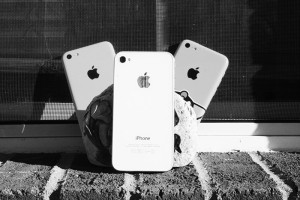 On December 2, 2015, a mass shooting in San Bernardino, CA left 14 dead and 21 wounded. Both suspects, Syed Rizwan Farook and his wife, Tashfeen Malik, were killed in a shootout a few miles away from the learning center where the massacre took place.
On December 2, 2015, a mass shooting in San Bernardino, CA left 14 dead and 21 wounded. Both suspects, Syed Rizwan Farook and his wife, Tashfeen Malik, were killed in a shootout a few miles away from the learning center where the massacre took place.
Farook had an iPhone. While this might seem relatively useless to the general public, the FBI found the phone an extremely important piece of evidence that could be used to prevent future shootings and to see who else was in contact with the two San Bernardino shooters.
The phone is locked with a passcode. The FBI has ordered Apple to break in. Farook’s phone is protected with a function that wipes all the phone’s data after the passcode is entered incorrectly 10 times.
A common misconception is that Apple can just find the passcode to the phone and enter it for the FBI, but, according to Apple, that is not possible. All information on all Apple devices is protected through an encryption process. Encryption turns data into incomprehensible text that prevents anyone or anything from reading it unless they have the right key. So, unfortunately, unlocking the phone is not as easy as Apple giving the FBI the passcode.
Since providing a passcode is impossible, the FBI has asked Apple to create a new version of their iOS operating system with reduced security measures that could bypass the 10 attempt limit so a computer can run every possible passcode, and eventually, open the phone. This version of iOS would be installed into the phone like a regular software update from Apple.
Apple has refused, releasing a public letter explaining their stance on the matter. They said that, while they “Have no sympathy for terrorists,” they will not create the software to open the phone. The main issue, according to Apple, is the breaking of their promise to never create a “backdoor” into an Apple product.
In a FAQ section of their press release, Apple explains that the code would not be difficult to build, however, they believe it is too dangerous. The issue is not the possibility of creating the code; the issue is keeping the code safe from criminals.
Another frequently asked question probes the possibility of just using this code on a single iPhone and never using it again. Apple’s argument is that “The digital world is very different from the physical world. In the physical world you can destroy something and it’s gone. But in the digital world, the technique, once created, could be used over and over again, on any number of devices.”
Apple has never used this technique to open an iPhone for law enforcement in the past and has no plans to do so in the future, however, for older versions of their iOS software, it is possible to break in without creating this software, which Apple has done before.
The San Bernardino case is not the only instance of law enforcement asking Apple to open an iPhone. For example, in Brooklyn, NY, U.S. Magistrate Judge James Orenstein ruled that Apple did not have to comply with the order to unlock the phone of a suspected drug dealer.
Many other tech companies, such as Google, Facebook and Twitter are siding with Apple, saying this backdoor code is too dangerous to create and use, even just for law enforcement purposes. However, the White House, presidential candidate Donald Trump, and Bill Gates side with the FBI.
Micah Karr
Reporter

